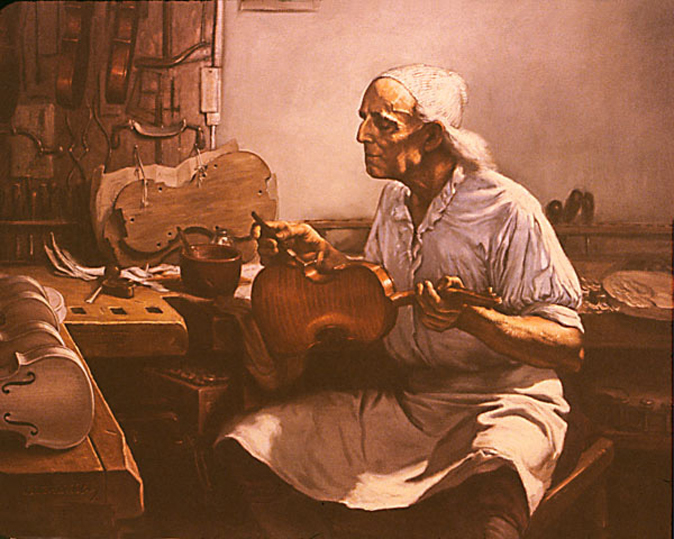Construction
A violin generally consists of a spruce top, also known as the top plate, maple ribs and back, two endblocks, a neck, a bridge, a soundpost, four strings, and various fittings, optionally including a chinrest, which may attach directly over, or to the left of, the tailpiece.
Strings
First made of stretched, dried and twisted sheep gut, currently it is still made of gut, specially if the musician want an historical tone, but also solid steel, stranded steel, a variety of synthetic materials and some times plated with silver.
Pitch range
The highest note is E7 and the lowest G3. Depending of the finger board length, higher and lower notes could played, although not commonly used in orchestral violin parts.
Acoustics
The arched shape, the thickness of the wood, and its physical qualities govern the sound of a violin affect the acoustic of the violin.
Sizes
Apart from the standard, full (4/4) size, violins are also made in so-called fractional sizes of 7/8, 3/4, 1/2, 1/4, 1/8, 1/10, 1/16, 1/32 and even 1/64.
Bow
Made of a wooden stick with a ribbon of horsehair strung between the tip and frog, at the opposite end. Some cheaper bows can be made of synthetic fibre.




